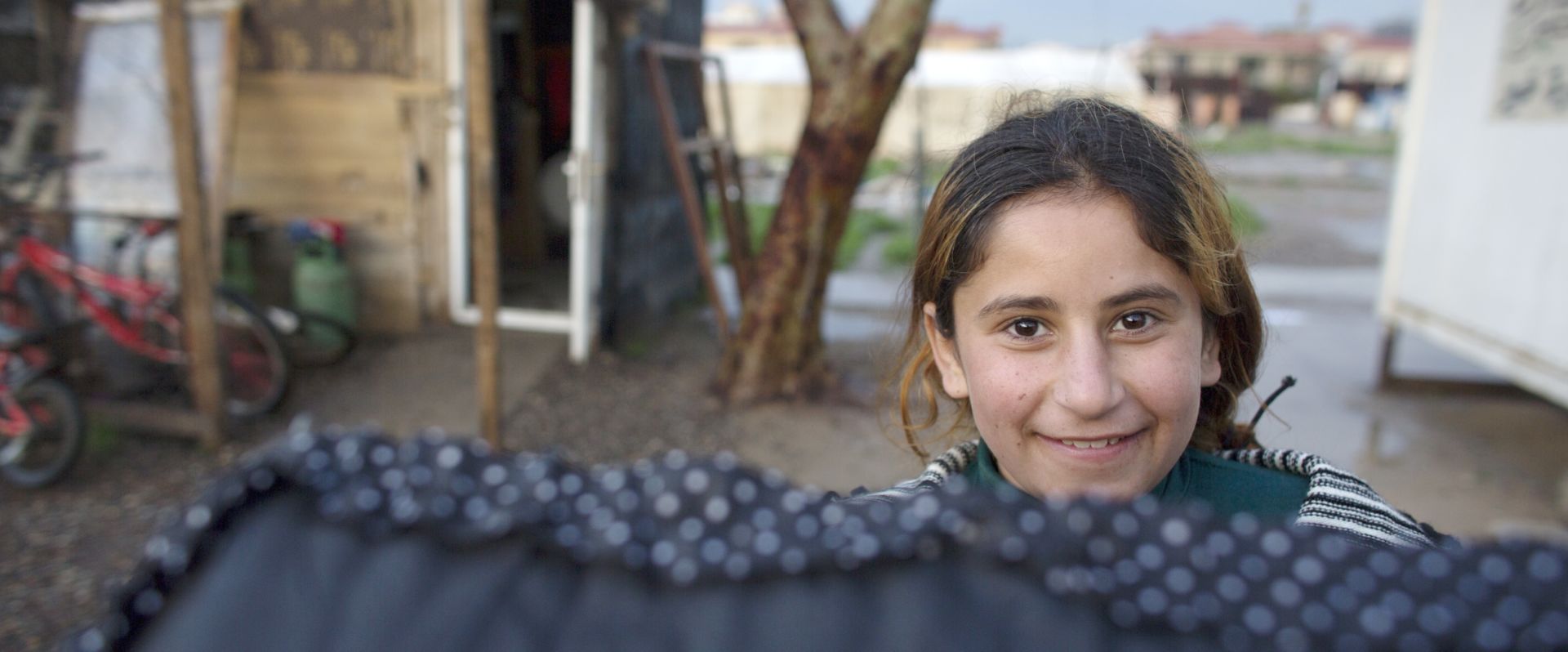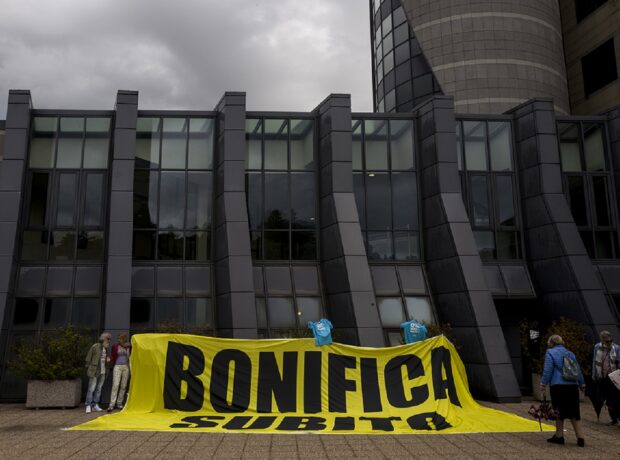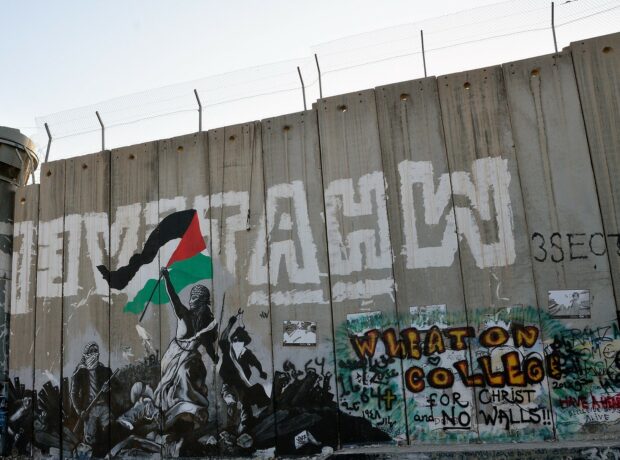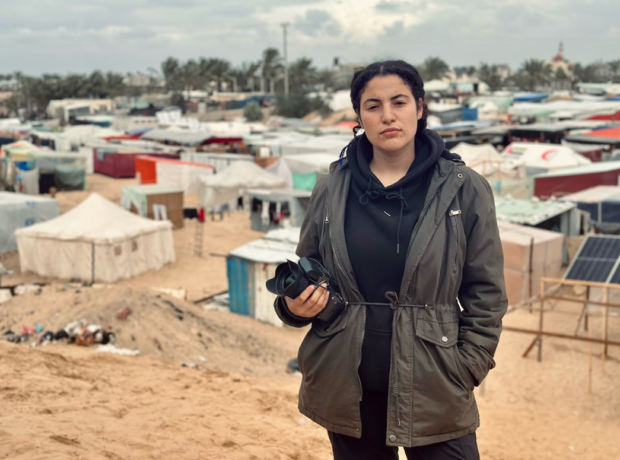In the Kurdistan region of Iraq award-winning journalist Billy Briggs and photographer Angela Catlin hear the stories of Yazidi women who survived unimaginable torture. Three years after ISIS committed genocide against this religious minority, they find the Yazidi people are still waiting for justice.
“They called them ‘sabia’ or ‘jaria’,” says Dr Luma Hazim. “This means ‘female slaves’. Daesh viewed them as ‘spoils of war’.”
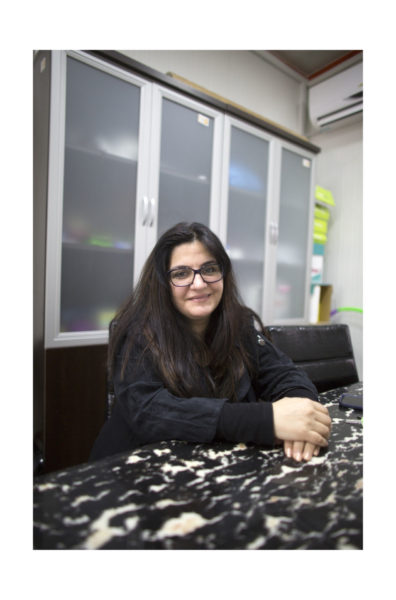
A dark haired woman with glasses, Hazim (pictured right) is hosting us inside a specialist centre in Iraqi-Kurdistan that helps Yazidi women who were abducted by ISIS. She speaks quietly as she details the unimaginable crimes the women suffered.
“Most were raped multiple times. Many were gang raped. Some had broken bones…broken legs…when they came to us. Many had genital problems,” says Hazim.
She stops to sip tea then continues. The centre she runs has helped at least 910 Yazidi women who managed to escape ISIS. The youngest victim was just eight years old, the oldest a woman aged 70. Many survivors suffer post-traumatic stress disorder.
Hazim, a pharmacist, explains that the centre was established after the first survivor arrived in Duhok on 18 September 2014 – a 15-year-old girl who’d managed to escape from ISIS captivity in Mosul.
“She required urgent medical and psychological help,” Hazim says, adding that she quickly realised there would be many more victims. “At the start our main concern was to give them medical support because they had been raped. Then we realised that most had trauma so we involved psychologists.”
We are in the Kurdish city of Duhok after arriving in Iraqi-Kurdistan a few days earlier. Our visit comes shortly ahead of the six-month mark in the Battle of Mosul, our aim to document the impact of ISIS on the Yazidis, one of the most persecuted religious minorities in the world.
Estimates put the global number of Yazidis at about 700,000, with the vast majority concentrated in northern Iraq. Yazidism is an ancient faith that integrates some Islamic beliefs with elements of Zoroastrianism, the ancient Persian religion, and Mithraism, a religion originating in the Eastern Mediterranean. The majority of Yazidis consider themselves ethnically Kurdish but they are religiously distinct from Iraq’s predominantly Sunni Kurdish population.
For their beliefs, the Yazidis have long been persecuted and they are considered heretical devil worshippers by ISIS who wanted to wipe them out in 2014. It was during August three years ago that the Islamist terror group swept across large swathes of northern Iraq on a grotesque killing spree. Sinjar was one of the first towns they targeted, a peaceful Yazidi heartland close to Syria in northwest Iraq.
There, during wanton medieval violence, ISIS killed or kidnapped around 9,900 people, according to a recent report. Of that figure 3,100 were murdered, with almost half executed by gunshot, beheading or being burned alive, while the rest died from starvation, dehydration or injuries during the siege. They abducted nearly 6,800 Yazidis, mostly women, who were forced into sexual slavery. Fifty thousand other Yazidis fled up a mountain, where they were forced to stay without food or shelter until they were rescued by Kurdish forces.
Three years on from what they consider to have been genocide by ISIS – and with the Islamists defeated in Mosul and in retreat elsewhere – what now for the Yazidis? Here, in Duhok, at least, there is some hope. Hazim and her team provide a holistic approach with the centre offering survivors treatment from GPs, gynaecologists, psychologists, lawyers, outreach workers and social workers.
But some of the staff here have had to receive counselling themselves after being traumatised by hearing the women’s stories. And the team expects many more cases once ISIS is routed in Mosul.
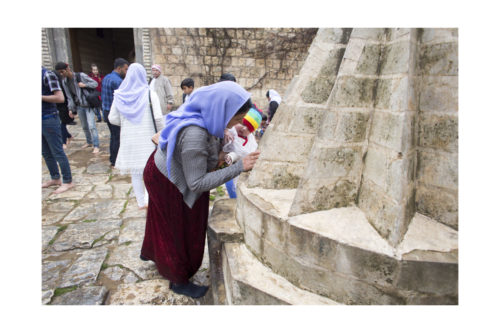
A Yazidi woman kisses a sacred stone in the temple at Lalish.
Hazim provides testimony from three women who’ve been counselled. Each said their life was improving. “I was sold several times, tortured and raped by ISIS members,” said one woman, aged 22. “I managed to escape with a lot of pains and lost hopes. Reaching Duhok, my friends who had received useful support, advised me to visit the centre. I feel much better after attending a few psychotherapy sessions.”
The testimony of many of the women treated here could be used with a view to bringing criminal charges against ISIS. But it’s not an immediate priority for those helping them.
Hazim says: “We ask the women if they wish to report to the police and most do in relation to this genocide. Around 1,000 testimonies – not just from enslaved women – have already been submitted to a local judge. But the problem is that most have been held for one or two years and suffered multiple rapes. Evidence collection is not as urgent because we need to treat these women first. We stopped referring them because it would traumatise them again. We ask them if we can send their testimony instead of them having to give evidence in person.”
These women want justice as well as healing, though, as do many Yazidis we meet.
A recent UN report called on the Iraqi government to ensure justice for the thousands of Yazidi women and girls who survived rape and sexual violence, noting the criminal justice system largely fails to properly protect victims.
The Global Justice Centre in New York and the human rights committee of the Bar Council of England and Wales recently lodged a legal submission with the prosecutor of the International Criminal Court, Fatou Bensouda, urging her to open a preliminary examination into genocide. The UN, the European parliament and the EU have all declared that crimes against the Yazidis constitute genocide, and states have clear obligations under international law to punish genocide. Yet, there has not been a single prosecution of an ISIS fighter in this field.
Writing in The Times, Kirsty Brimelow QC, a specialist in international human rights, argues that the Yazidi genocide demands an international law response from the International Criminal Court. She writes: “The ICC has an opportunity to fulfil its core mandate to prosecute individuals for genocide and crimes against humanity and end impunity. There is a legal basis for the court to act, complementary to legal actions carried out by individual states. It should do so urgently. Otherwise, the ICC is in danger of appearing to turn its back on the mountain of death.”
***
There are an estimated 300,000 Yazidis still in Iraqi-Kurdistan. In the Duhok area alone there are over 20 camps housing tens of thousands of internally displaced persons (IDPs) who fled from ISIS. These include thousands of Yazidis who’ve been away from their homes for nearly three years now. At Duhok’s main souk we meet a young Yazidi couple whose lives are in limbo, the day after Newroz, the Kurdish New Year.
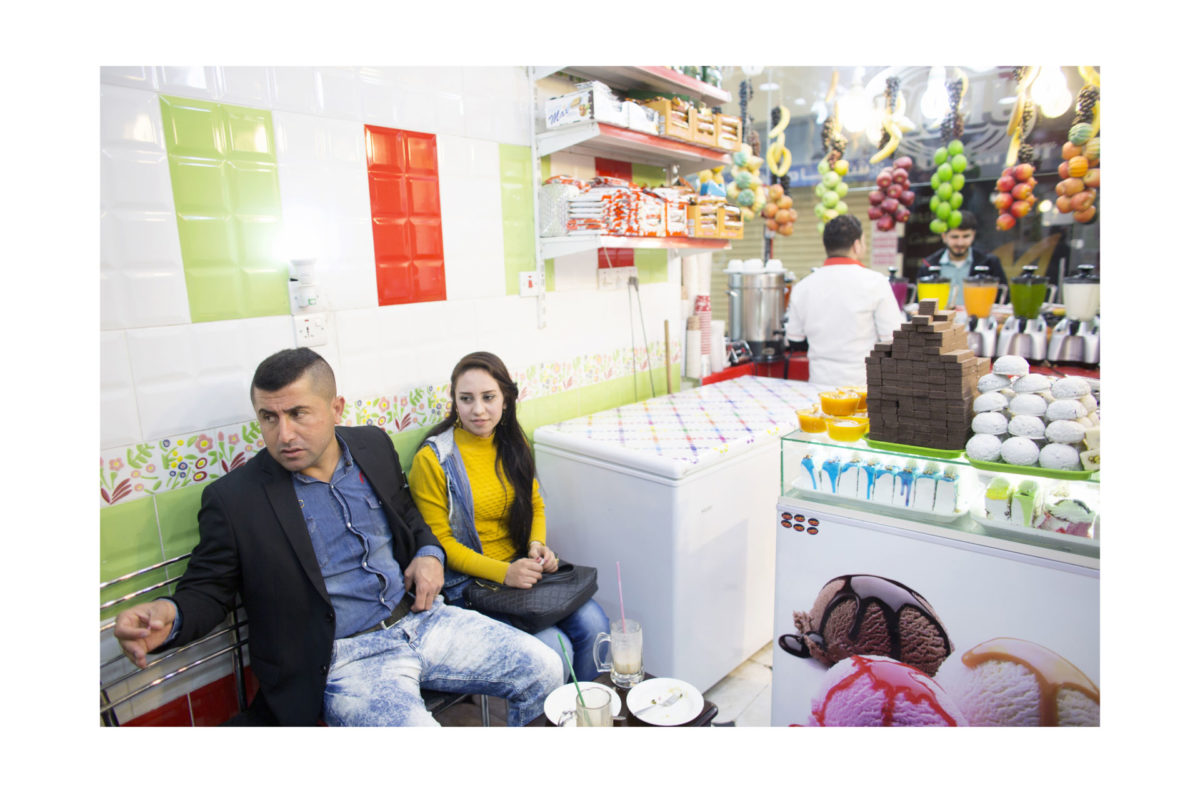
Nori Saddo and his wife Sana (pictured above) are in a shop that sells fruit juices, baklava and pots of yellow custard, among other brightly coloured sweets. They order drinks and then sit and chat with us. They are from Sinjar and live in an IDP camp just south of the city which has 6,000 tents. Nori – whose English is excellent – is smartly dressed in a black jacket and denim shirt. Sana sports a mustard jumper and dangling gold earrings.
They married last year after meeting in the camp. Nori came from a village called Dirkhani which is near to a cement factory in Sinjar, close to Mount Sinjar. He and his family fled Dirkhani two-and-a-half years ago. They escaped to the mountain and later to Syria before ending up in Duhok as IDPs.
Nori now works with a Norwegian NGO at the camp while Sana studies sports science at a local college. “We are free to leave the camp,” Nori says, adding that he and his friends do so most days to visit a gym. There are schools inside the camp and a health centre with around 10 NGOs providing support. Nori lives with Sana, next door to his mother and sister who live in a separate tent.
Would they like to return to their home?
“I’m not sure,” Nori replies. “It’s very difficult and it’s not safe. Most people just want to go somewhere far away and forget what happened.”
ISIS is no longer in Sinjar but there is political instability there with various factions vying for control, meaning that tens of thousands of Yazidis will remain scattered across northern Iraq, living as IDPs for the forseeable future. A sizeable chunk of that diaspora is in Duhok but there are significant populations in IDP camps elsewhere in the northern part of Iraq which is controlled by the Kurdistan Regional Government.
In Erbil – the Kurdish capital – we meet a tiny Yazidi community. They also came from Sinjar and have lived in an area of Erbil called Dream City since 2014. There are 100 people living in basic huts, in the shadow of the plush 5-star Divan Hotel that towers above their ramshackle encampment.
We visit during a thunderstorm with the help of an artist from Bolton, England, called Tracy Fenton. She’s working at the University of Kurdistan Hewlêr which has been supporting these Yazidis since last autumn. Fenton is artist in residence and has been using art to help the men, women and children to cope with their situation.
It is difficult to imagine what these families have witnessed – especially the children. While sitting in one of the families’ homes chatting, a girl about six years old tells us a story in her native language, Kurmanji, and when she says the word “Daesh” she draws her hand across her throat.
Fenton, who studied creative education at Salford University, says that while the Yazidis are content living in Erbil, they all wish to return to Sinjar: “A few weeks ago I was doing a project with them and said ‘Draw something that makes you happy’ – and every single one of them drew the houses they left behind.”
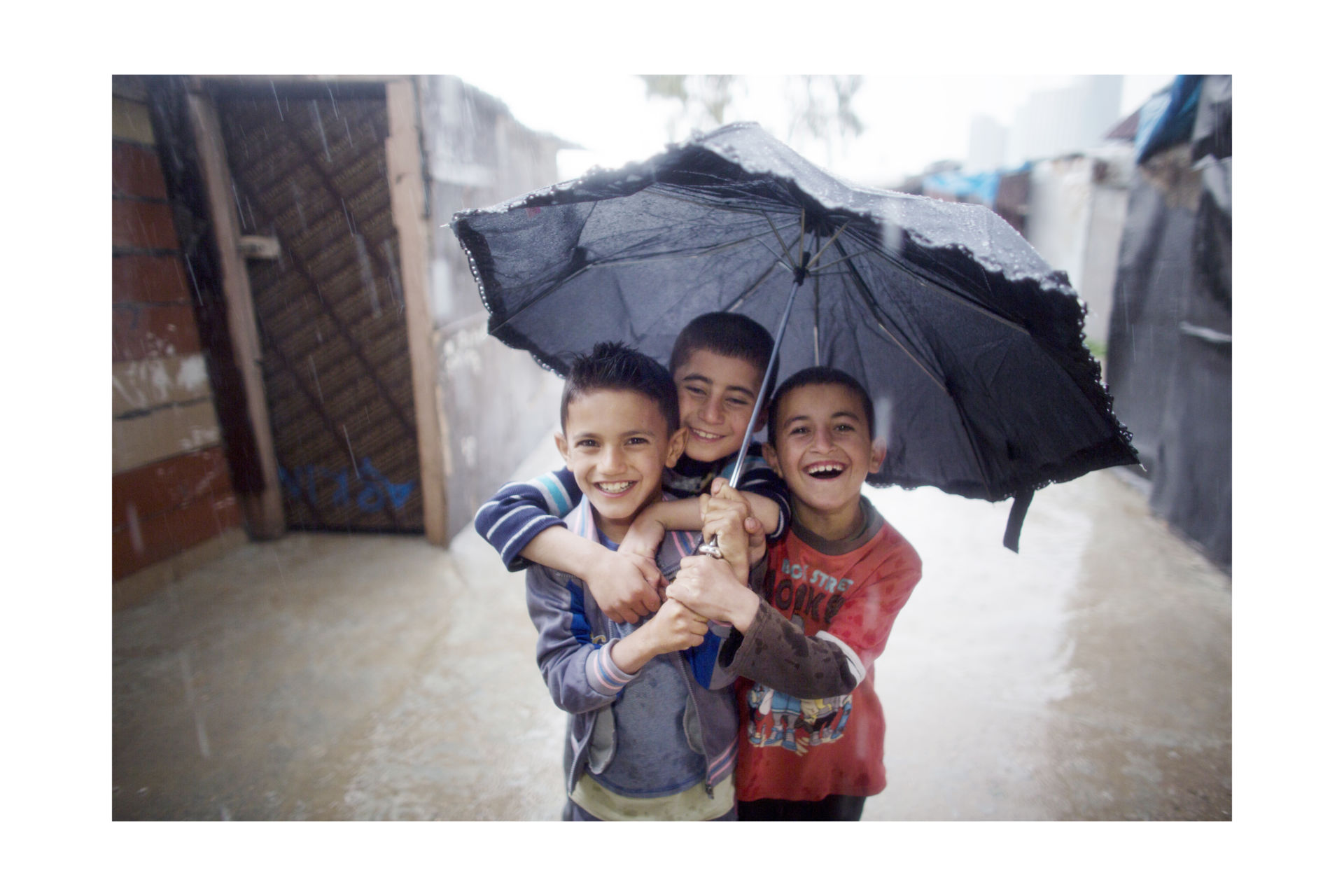
Despite such a grim recent past, coupled with an uncertain future, these families do appear contented. We watch as the children splash in puddles and catch raindrops in their hands during the downpour, and the adults are extremely warm and welcoming.
Part of this resilience is down to faith and a few days later we get a brief insight into Yazidism when we visit the Yazidis’ spiritual heartland, Lalish. It’s an ancient village of shrines in a valley, east of Duhok, a place so sacred that all visitors must remove their shoes.
Inside its main temple, we watch barefooted pilgrims kiss and touch colourful silk cloths tied to concrete pillars. They untie knots in the silk to make a wish before entering another chamber where people chant in an underground crypt. Children chatter excitedly as they explore this ancient place of worship. In a dark chamber with a gnarled stone floor and rows of urns, a woman with black hair uses a selfie stick. She smiles into the camera as her mother holds her child.

Outside, we speak to one of the pilgrims. His name is Ali, a Yazidi from a small village near the Syrian border but now resident in an IDP camp near Duhok. Ali – a large man with a thick moustache and fair skin – talks about the night ISIS came.
“They attacked at 10.30pm and we defended our village with light weaponry until 8.30am…until it became too much,” he says. It was the 3 August 2014. He and his family fled and spent eight days on Mount Sinjar before eventually getting to safety.
He says conditions in the IDP camp are good and that his family is “happy enough”. In less than a fortnight, though, Ali must leave them. His home village is still under ISIS control and he’s now a commander in a Yazidi battalion with the Peshmerga, the Kurds’ main military force. He says there are 8,500 Yazidis fighting alongside the Peshmerga.
“They created a battalion for the Yazidis, all volunteers, and I am one of them. So, I have been fighting for the Peshmerga and President Barzani [of the Kurdistan Region of Iraq]. I am a commander in this regiment and I am due to go back to the frontline in 12 days – the Sinjar front,” Ali says.
We ask if he is nervous about going to war? “No, I only fear God,” Ali replies smiling before shaking my hand and bidding farewell.
He faces an uncertain future, as do his people.
*Editor’s note: At the time of publication no one has been charged with the 2014 Yazidi genocide.
For more from Iraq see our series on allegations of torture and abuse by British military personnel.
